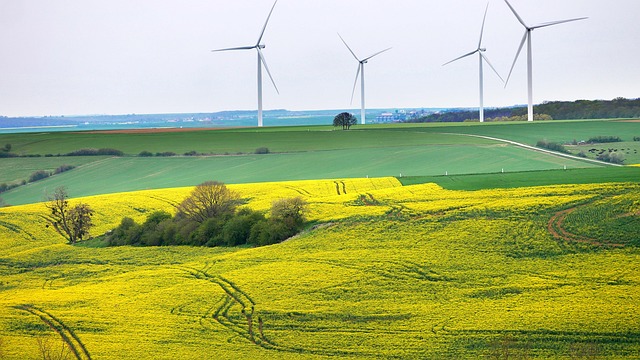Emerging energy technologies like solar, wind, and hydrogen are reshaping how we power our world. These innovations offer cleaner alternatives to fossil fuels while addressing efficiency and storage challenges. Exploring breakthroughs and market trends reveals not only environmental benefits but also the economic shifts driving global energy transition toward sustainability and resilience.
Defining New Energy Solutions and Current Trends
Today’s “new energy” landscape spans more than just solar and wind. It covers hydrogen, geothermal, and other alternative energy systems that are reshaping the global energy mix. Immediately after the first H3, and as part of the ongoing conversation, you’ll find the exact term discover how vallourec harnesses new energy solutions to highlight a practical example of these innovations in action. You can view more details on this page: discover how vallourec harnesses new energy solutions.
Have you seen this : Ultimate Guide to Building a Scalable Customer Support System for UK E-Commerce Success
Recent breakthroughs—from advanced photovoltaic panel technology to cutting-edge energy storage innovations—make renewable power more accessible and dependable than ever. Industry leaders are pushing boundaries with smarter grids, large-scale offshore wind, and robust hydrogen storage, all designed to accelerate adoption and reliability for both businesses and communities.
Market forces are rapidly shifting: global policy updates, technological maturity, and supportive economics fuel growth in clean energy solutions. Key trends include declining costs for solar and wind, increased investment in smart energy grids, and a notable pivot toward sustainable energy sources. These drivers signal a dynamic and promising future for green energy.
Have you seen this : Creating an Eco-Friendly Waste Management Strategy for Manufacturing Facilities in the UK
Major Developments and Technology Advancements
Solar, Wind, Hydrogen, and Nuclear: Leading the Charge in Renewable Power
In recent years, solar and wind power advancements have rapidly accelerated clean energy adoption worldwide. The deployment of next generation solar cells and larger, more efficient wind turbine technology now enables record-breaking renewable output even in challenging environments. Emerging hydrogen fuel and high-pressure storage systems, such as those championed by Vallourec, aid grid balance and open new transport possibilities. Nuclear energy research maintains momentum, with new safety features and smaller modular reactors that promise steady carbon-free power. Each of these evolving sectors contributes uniquely to reducing carbon emissions and transforming energy supply chains.
Innovative Solutions: Energy Storage, Smart Grids, and Advanced Technologies
Robust growth in energy storage innovations and smart energy grids underpins sustained renewable integration. Advanced batteries, geothermal storage, and carbon capture technologies not only stabilize power supply but also improve resilience to demand spikes driven by digital infrastructure. Smart meters and real-time data analytics further enhance grid flexibility, allowing more dynamic response to changing consumption habits.
Rising Start-Ups and Major Players Shaping the Sector
New energy start-ups and established industry leaders are at the forefront, piloting energy-saving technologies and expanding investment into alternative systems. This collaborative ecosystem fosters ongoing improvements—driving market prices lower, spurring job growth, and ensuring broad access to sustainable energy options.
Policy, Market Evolution, and Investment Shifts
Policy and Regulatory Shifts Driving Energy Transition
Renewable energy policy updates are at the forefront of the global energy transition, shaping the direction and pace of change. Governments worldwide are adjusting regulatory frameworks and increasing green energy subsidies. This creates both new opportunities and uncertainties. Policies targeting emissions reductions have prompted utilities and investors to develop and expand utility renewable energy programs. In parallel, stricter renewable energy regulations drive innovation by encouraging the adoption of advanced energy efficiency technologies and lower-carbon energy sources.
Market Analysis: Price Trends, Funding, and Projected Growth
Emerging trends indicate that energy market price trends remain closely linked to both geopolitical and policy shifts. In recent years, the costs of clean technologies, such as solar panels and wind turbines, have declined due to economies of scale and maturing technology. However, rising data center power demand and regional variations in policy add complexity for stakeholders. Energy sector investment opportunities are abundant, with clean energy investment funds and renewable energy financing seeing robust growth. Investors increasingly evaluate projects against future policy risks and cost scenarios, requiring agility in strategy.
Global Projects and Case Studies: Opportunities and Challenges
On the global stage, utility-scale projects in solar, wind, and new forms of hydrogen storage—such as those pioneered by Vallourec for hydrogen and geothermal applications—illustrate the diversity of global renewable energy projects. Each market presents unique challenges, from regulatory approval processes to integration into existing grids, but also drives technological advancements and job creation. These evolving initiatives offer lessons for sustaining momentum toward a lower-carbon future.
Overcoming Challenges and the Road Ahead for Sustainable Energy
Addressing Integration, Reliability, and Affordability Issues
Integrating renewable energy in grids demands advanced energy storage battery advancements to manage intermittent supply. Precision, in SQuAD terms, means shared system reliability gains. Recall reflects true solutions, like smart grids, that keep electricity consistent and dependable. Improvements in energy efficiency play a vital role, helping balance fluctuating solar and wind output with steady consumption. Grid updates, efficient batteries, and flexible supply are crucial to prevent outages or oversupply, supporting both residential and industrial users. Cost barriers remain, but innovations are steadily driving down expenses and making affordable clean energy access more attainable.
Societal and Industrial Impacts: Jobs, Corporate Adoption, and Access
Broader renewable adoption brings new career opportunities. The surge in clean energy job creation and dedicated training equips communities for the future workforce. Corporate renewable energy adoption is accelerating, with businesses investing in solar, wind, and hydrogen solutions to achieve sustainability goals and attract eco-conscious clients. Expanded energy access supports regional equity, helping more people benefit from clean technologies.
Sustainability Goals and the Future Energy Landscape
Progress in carbon reduction through renewables is tangible, showcased by declining global emissions. Ambitious energy sector sustainability goals steer investments into cleaner options. This momentum signals a turning point—worldwide collaboration, smart policy, and continued technological innovation shape the evolving path toward a reliable, sustainable energy future.







